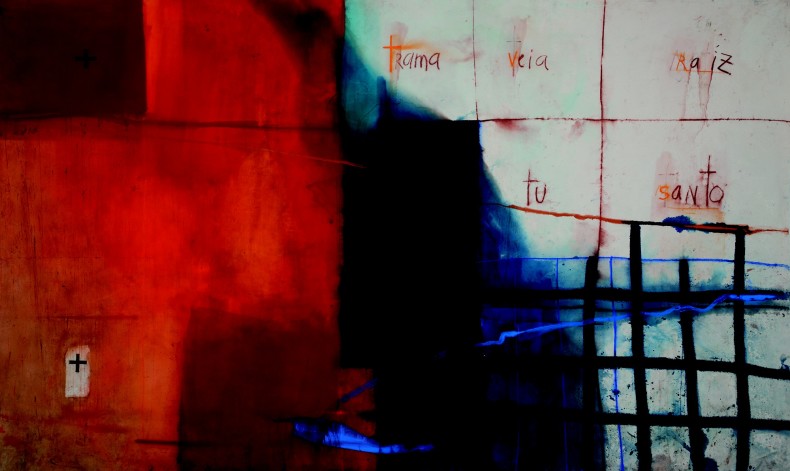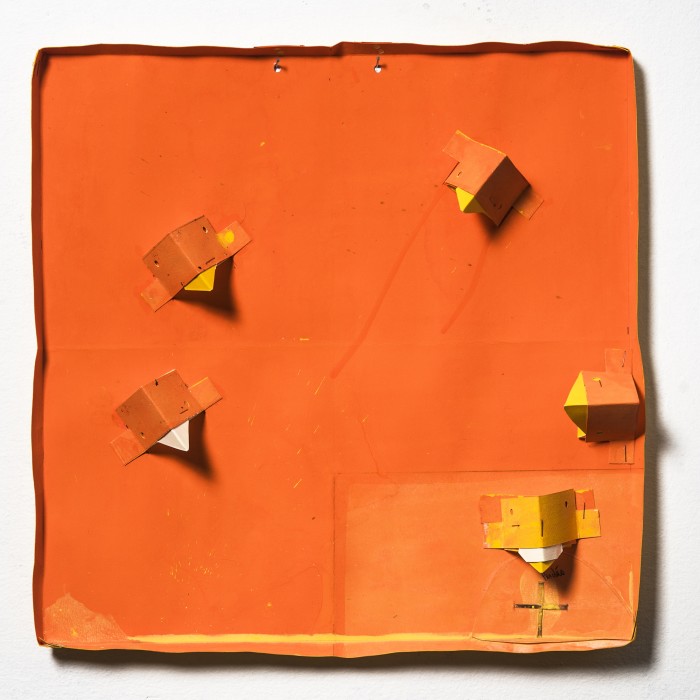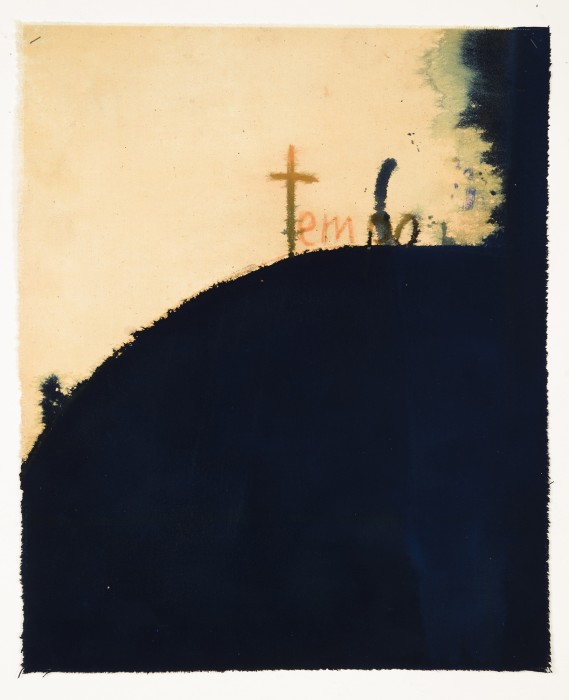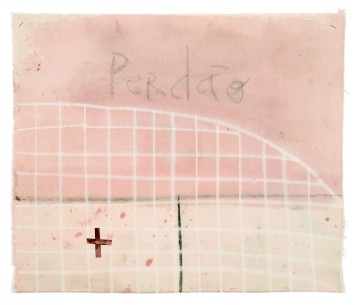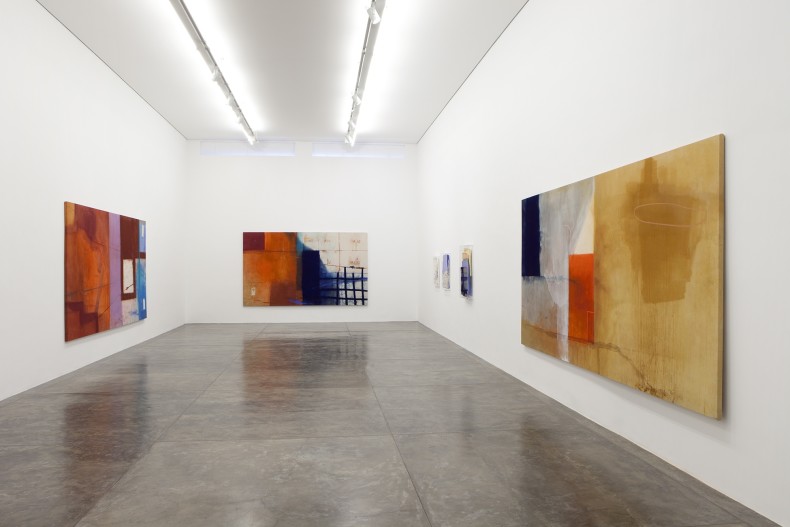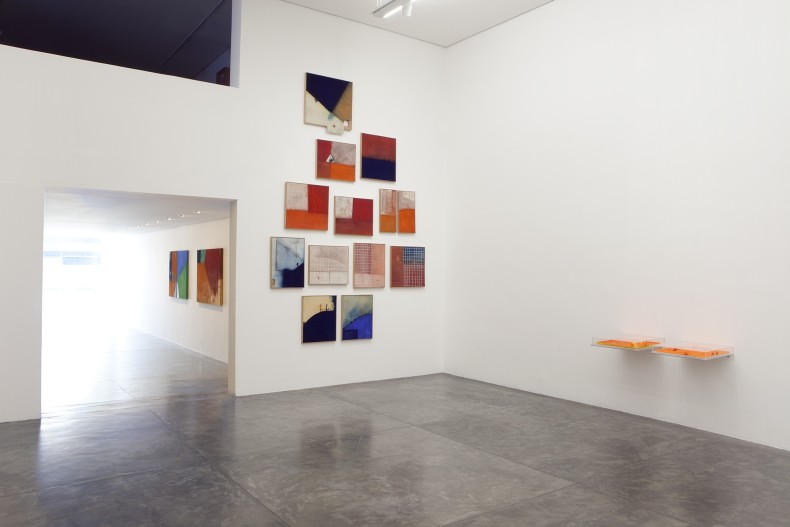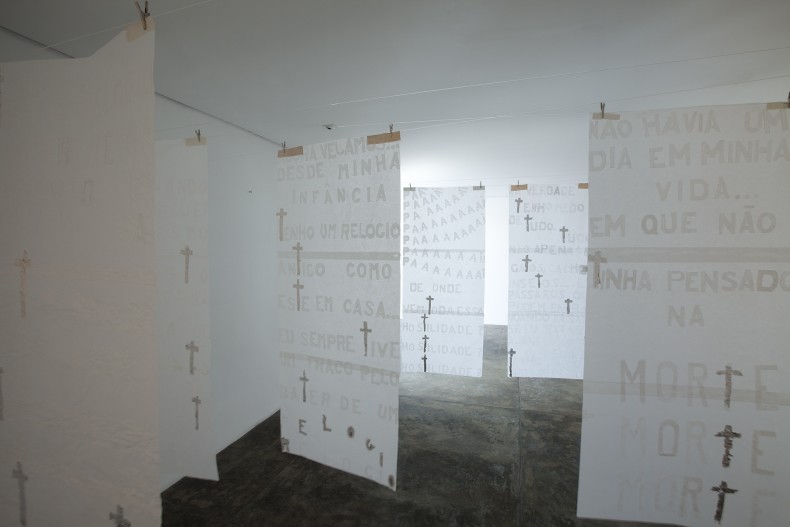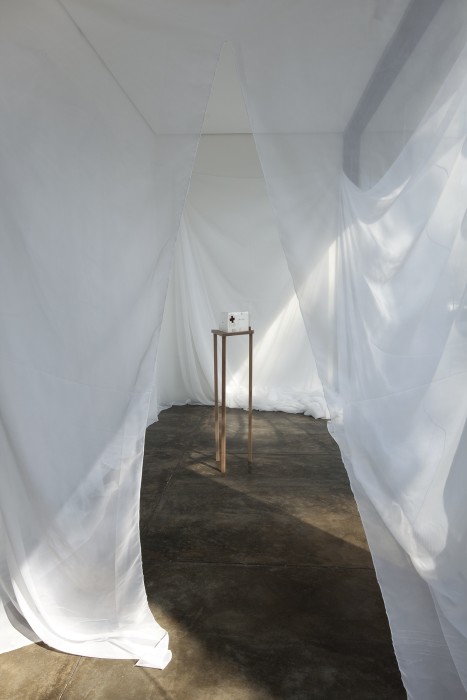Starting on June 16, Galeria Nara Roesler will present Karin Lambrecht’s show Colors, Words and Crosses. It will be the third show of the artist and painter from Rio Grande do Sul hosted by the gallery, featuring approximately 30 drawings and paintings made between 2009 and 2012. “The set of pictures Karin Lambrecht is presenting results from a color-intensive work, at times discordant as a musical chord, impregnating her painting with colorations which are typical of her art,” explains Gloria Ferreira, the show’s curator.
Karin Lambrecht participated in the iconic show Como vai você, geração 80, in 1984, and incorporated new avenues into contemporary art by rethinking the canvas and painting techniques. Her works inhabit a space in between painting and sculpture, conversing with Arte Povera, an artistic current that developed in Italy in the 1960s and 1970s. Throughout her career, time is regarded as a vital condition for art, an issue that reached its peak in 2008 in her installation 9 de agosto de 1949, dia e noite, Camus em Porto Alegre, which referenced the existentialist philosopher. Her work, which is featured in important collections such as those of the São Paulo State Art Gallery (Pinacoteca do Estado) and Instituto Itau Cultural, had a special room at the 25th São Paulo Biennial, in 2002, and won prizes such as the 2009 Açorianos Fine Arts Prize for painting highlight.
The works in the show reveal aesthetical and ethical concerns over the potential healing power of colors. The notion of healing lies at the core of the object Cruz elementar, on paper and wood, half-triangle shaped, with texts either handwritten or imprinted with stamps and crosses. In other drawings, Karin Lambrecht shapes up papers, origami and cuts in artisanal fashion, using pigments and materials such as gauss and polystyrene. In these, the artist imagines a distant future, a world of many landscapes where nature is absorbed by cultural harmony. One example is Something, which depicts villages of small cabins that revolve around Saint Matthew and Mary, witnesses of the Resurrection and Ascension. The creation of the world is seen hanging from another drawing.
Her abstract canvases featuring geometrical shapes and expressionistic, broad brush strokes come in various sizes. In the four large ones, made over the course of several months, the brushes seem to want to fly, out of a need for expansion, and the pictures convey a sense of freedom. In the small ones, made in a quicker, more controlled fashion, the paint is combined with dry pastels and coal, and tonalities change from one to the other. There are some intermediate-sized ones whose pictorial treatment is reminiscent of color as spiritualized matter, with its polarities and interactions, ensuring the high voltage of the paintings on the canvases.
The paint, manufactured by the artist herself, combine pigments of various origins which interact with green cadmium, mixed with ultramarine pink; Paris blue plus cobalt turquoise, plus red cadmium; or else lapis lazuli and earthy colors. The artist also changed words in some of her works. Words which at times get dissolved underneath the many layers of paint or transmute themselves, as in “teia” to “veia” (web to vein, in Portuguese), though they always retain the letter T, once again evoking the cross, death, the cure, the disease.
In turn, the 11 Legendas para Bergman series appropriates the 88-year-old filmmaker’s intimate accounts of his life, childhood, marriages, films and about Fårö, in Bergman Island. On silk paper, the subtitles made from cut-off letters include silver-paper T’s in an allusion to the cross reminiscent of that same melancholy thought: “There wasn’t a day in my life when I didn’t think of death,” says the Swedish director whose history bears resemblances with Karin’s own family history.
